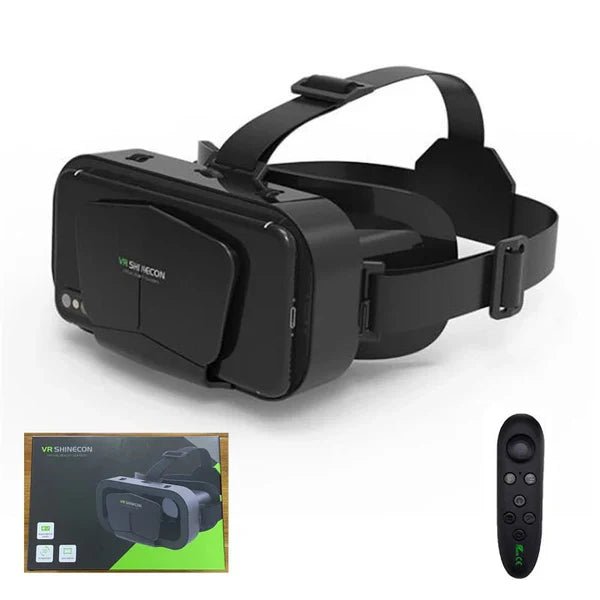
Beyond Gaming: 7 Surprising Ways VR Glasses Are Being Used in 2025
Share
Introduction
When people hear “VR glasses,” most think of video games. But the real story? VR is about much more than just play.
In 2025, VR glasses are being used to treat phobias, train surgeons, teach coding, design cars, and even meditate. They're helping people see the world differently — sometimes literally.
This blog explores 7 real-world, non-gaming applications for VR glasses that prove they’re more versatile than you ever imagined.
1. VR Therapy & Mental Health
VR is proving powerful in mental health treatment. Therapists are using it to treat:
- Phobias (heights, spiders, flying)
- Social anxiety
- PTSD
- Mindfulness & meditation
Guided VR meditation apps offer serene environments that calm the mind — think floating on a lake or watching a sunset on another planet.
2. Remote Workspaces
Forget flat screens. Now, you can meet coworkers in virtual 3D boardrooms, walk through CAD models, and brainstorm with virtual sticky notes — all while feeling present.
Platforms like Horizon Workrooms and Spatial are redefining how remote teams collaborate.
3. Virtual Classrooms & Labs
VR glasses are unlocking immersive education:
- Dissect virtual frogs
- Conduct chemistry experiments
- Explore the human heart in 3D
- Learn coding or engineering with interactive tools
Students retain more when they learn by doing — and VR lets them do, without risk.
4. Virtual Travel & Culture
With apps like Wander, you can:
- Tour the Louvre
- Walk through Venice canals
- Visit historical ruins in Egypt
- Explore the Great Wall of China
It's also great for the elderly or people with limited mobility — travel becomes accessible to everyone.
5. Design and Prototyping
Architects, product designers, and engineers use VR to:
- View 3D models in real scale
- Walk through homes before they're built
- Make real-time design tweaks
Tools like Gravity Sketch and ShapesXR turn VR glasses into design studios.
6. Realistic Job Training
Airlines, hospitals, and even construction companies use VR for staff training.
Why?
Because it’s safe, realistic, and repeatable.
You can:
- Simulate engine repairs
- Practice surgical procedures
- Learn factory machinery
- Handle emergency situations
VR training is cheaper and safer than the real thing — and more effective.
7. Social Connection & Events
Lonely at home? Pop on your VR glasses and:
- Attend live concerts
- Watch sports in 3D stadiums
- Play chess with someone in Tokyo
- Join book clubs or comedy shows
It’s not just a screen — it’s shared space.
Who’s Using VR Beyond Gaming?
| Industry | Use Case |
|---|---|
| Healthcare | Therapy & surgical training |
| Education | Immersive learning environments |
| Design | Virtual modeling & feedback |
| Construction | On-site training simulations |
| Corporate | Remote meetings & onboarding |
| Travel | Virtual tourism experiences |
Barriers Are Disappearing
In the past, VR was expensive, bulky, and glitchy. But in 2025:
- Prices have dropped
- Devices are wireless and lighter
- More apps are cross-platform
- User interfaces are beginner-friendly
Now, anyone — even grandparents — can put on VR glasses and have a meaningful experience.
Final Thoughts
The age of “just screens” is fading. Whether you’re a student, traveler, designer, or just someone who wants a better way to connect — VR glasses open new worlds.
Gaming? Yes.
But also learning, healing, collaborating, and exploring.
This isn’t the future. It’s already here.
FAQs
Q1: Can I use VR glasses if I’ve never gamed before?
Yes! Many VR apps are made for relaxation, learning, or travel — no gaming experience needed.
Q2: Are they easy to set up?
Most standalone VR glasses require just a Wi-Fi connection and a mobile app to start.
Q3: What if I wear prescription glasses?
Most headsets accommodate them, or offer lens adapters.
Q4: Do I need a big room to use VR?
Some experiences require movement, but many can be enjoyed while seated.
Q5: Can I use VR without internet?
Yes, but many apps and multiplayer features require an internet connection.
